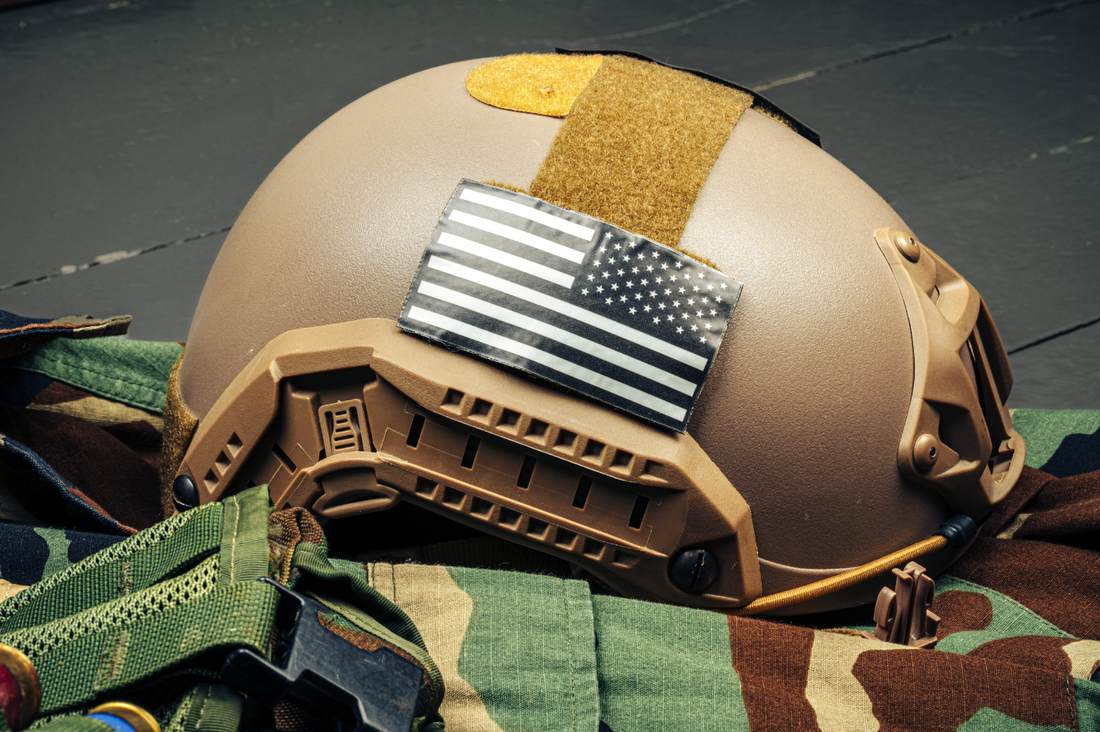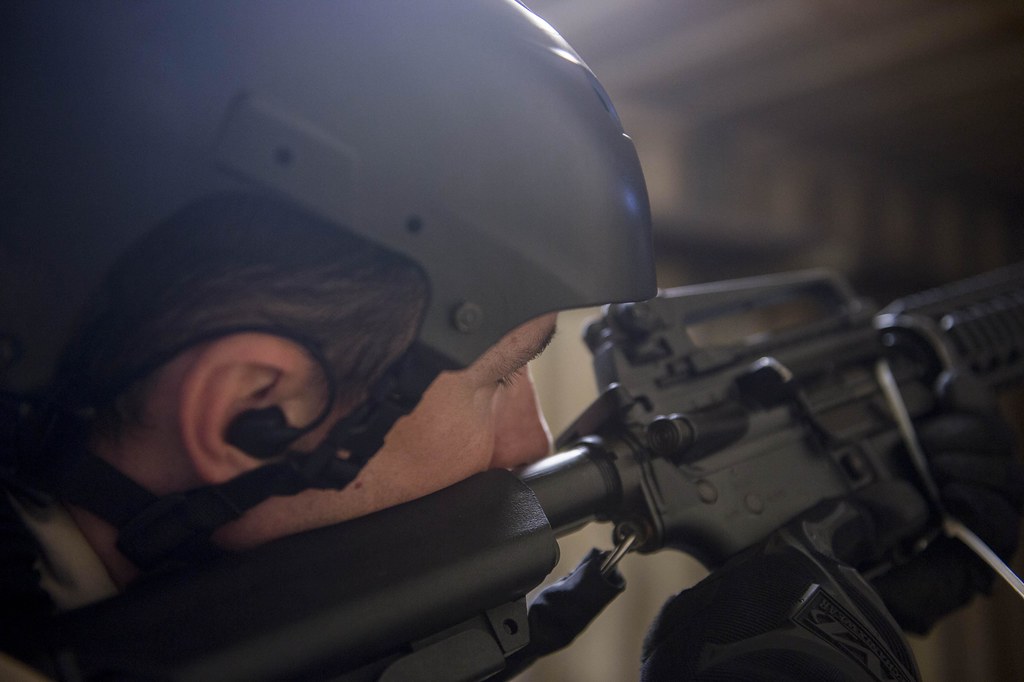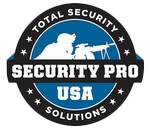
Ballistic helmets are essential protective gear for individuals engaged in high-risk activities. These helmets are designed to provide head protection against ballistic threats, such as bullets and shrapnel. In this comprehensive guide, we will explore the different types of ballistic helmets, how they work, and their features and benefits. We will also discuss the importance of ballistic helmets in high-risk activities and provide insights on where to buy them. Whether you are a military personnel, law enforcement officer, or engaged in sports and recreational activities, this guide will help you make an informed decision when choosing the right ballistic helmet for your needs.
Introduction
Ballistic helmets are a crucial type of protective headgear designed to shield the wearer's head from ballistic threats. These helmets are commonly used by military personnel, law enforcement officers, and individuals who engage in high-risk activities such as hunting, shooting, and airsoft.
Definition of Ballistic Helmets
A ballistic helmet is a type of protective headgear that is specifically designed to protect the wearer's head from ballistic threats such as bullets and shrapnel. These helmets are made from materials that are capable of stopping or deflecting bullets and other ballistic threats. Ballistic helmets are designed to provide protection to the wearer's head, face, and neck.
Importance of Ballistic Helmets in High-Risk Activities
High-risk activities such as military operations, law enforcement, and hunting can expose individuals to ballistic threats. Ballistic helmets are designed to protect the wearer's head from these threats, reducing the risk of injury or death. These helmets are essential for individuals who engage in high-risk activities, as they provide a crucial layer of protection that can save lives. Ballistic helmets are also used in sports and recreational activities such as paintball and airsoft, where they provide protection against accidental impacts.
Types of Ballistic Helmets
Ballistic helmets come in different types, each with its own level of protection. The following are the most common types of ballistic helmets:
Level I, II, IIIA, III, and IV Helmets
Ballistic helmets are classified into different levels based on their ability to protect the wearer from ballistic threats. The National Institute of Justice (NIJ) has established five levels of ballistic protection for helmets:
- Level I: This level of protection is designed to stop low-velocity handgun rounds such as .22 caliber and .38 caliber bullets.
- Level II: This level of protection is designed to stop medium-velocity handgun rounds such as 9mm and .357 Magnum bullets.
- Level IIIA: This level of protection is designed to stop high-velocity handgun rounds such as .44 Magnum and .357 SIG bullets.
- Level III: This level of protection is designed to stop rifle rounds such as 7.62mm NATO and .223 Remington bullets.
- Level IV: This level of protection is designed to stop armor-piercing rifle rounds such as .30-06 M2AP and .338 Lapua Magnum bullets.
Comparison of Different Types of Helmets
The level of protection offered by a ballistic helmet depends on its classification. Level I helmets offer the least amount of protection, while Level IV helmets offer the most. It is important to choose a helmet that provides the appropriate level of protection for the activity being performed.
Features and Benefits of Each Type of Helmet
Each type of ballistic helmet has its own unique features and benefits. For instance, Level I helmets are lightweight and comfortable, making them ideal for activities such as hunting and airsoft. Level II helmets offer better protection than Level I helmets and are suitable for activities such as paintball and airsoft. Level IIIA helmets are designed to stop high-velocity handgun rounds and are commonly used by law enforcement officers. Level III helmets offer protection against rifle rounds and are suitable for military personnel. Level IV helmets offer the highest level of protection and are commonly used by special forces and law enforcement officers in high-risk situations.

How Ballistic Helmets Work
Ballistic helmets are designed to protect the wearer's head from ballistic threats such as bullets and shrapnel. These helmets work by absorbing the energy of the bullet or shrapnel, reducing the impact on the wearer's head.
Materials Used in Ballistic Helmets
Ballistic helmets are made from a variety of materials, including Kevlar, aramid fibers, and ceramic materials. These materials are capable of stopping or deflecting bullets and other ballistic threats. Kevlar is a synthetic fiber that is five times stronger than steel, yet lightweight and flexible. Aramid fibers are similar to Kevlar and are also used in the construction of ballistic helmets. Ceramic materials are also used in some helmets, as they are extremely hard and can shatter bullets upon impact.
Design and Construction of Ballistic Helmets
Ballistic helmets are designed to be lightweight and comfortable while providing maximum protection. They are constructed using layers of materials that are capable of stopping or deflecting bullets and other ballistic threats. The design of the helmet is also important, as it must cover the entire head and provide protection to the face and neck. Some helmets also have a visor to protect the wearer's eyes.
Testing and Certification of Ballistic Helmets
Ballistic helmets are tested and certified by organizations such as the National Institute of Justice (NIJ) and the Department of Defense (DoD). These organizations test the helmets to ensure that they meet the required level of protection. The NIJ has established five levels of ballistic protection, with Level IIIA being the most common for law enforcement and civilians. The DoD has its own standards for ballistic protection, which are often more stringent than the NIJ standards. Helmets that meet these standards are labeled accordingly, so consumers can be sure they are purchasing a helmet that provides the necessary level of protection.

Military-Grade Ballistic Helmets
Military-grade ballistic helmets are designed to provide maximum protection for military personnel. These helmets are commonly used by soldiers and other military personnel in combat situations.
Overview of Military-Grade Helmets
Military-grade helmets are designed to provide maximum protection against ballistic threats. These helmets are made from materials such as Kevlar and ceramic materials and are capable of stopping or deflecting bullets and other ballistic threats. Military-grade helmets are typically designed to meet or exceed the standards set by the National Institute of Justice (NIJ) for ballistic protection.
Features and Benefits of Military-Grade Helmets
Military-grade helmets offer the highest level of protection and are designed to withstand the rigors of combat. They are lightweight and comfortable, making them ideal for extended periods of use. Military-grade helmets also typically feature a high-cut design, which provides additional protection to the sides and back of the head. Some military-grade helmets also come equipped with helmet visors and other helmet accessories to provide additional protection and functionality.
Comparison of Different Military-Grade Helmets
There are several different types of military-grade helmets available on the market, each with its own unique features and benefits. Some popular military-grade helmets include the MICH (Modular Integrated Communications Helmet), ACH (Advanced Combat Helmet), and the PASGT (Personnel Armor System for Ground Troops) helmet. Each of these helmets offers different levels of protection and features, so it is important to choose a helmet that provides the appropriate level of protection for the activity being performed. When choosing a military-grade helmet, it is also important to consider factors such as weight, comfort, and compatibility with other gear and equipment.

Tactical Ballistic Helmets
Tactical ballistic helmets are designed for law enforcement officers and other individuals who engage in tactical operations. These helmets are designed to provide maximum protection while allowing the wearer to maintain mobility and flexibility.
Overview of Tactical Helmets
Tactical helmets are designed to provide maximum protection while allowing the wearer to maintain mobility and flexibility. These helmets are commonly used by law enforcement officers and other individuals who engage in tactical operations. They are made of high-quality materials such as Kevlar, which is a strong and lightweight synthetic fiber that is five times stronger than steel.
Features and Benefits of Tactical Helmets
Tactical helmets are lightweight and comfortable, making them ideal for extended periods of use. They are designed to provide maximum protection against ballistic threats, including bullets and shrapnel. Tactical helmets also come with additional features such as helmet visors, helmet accessories, and helmet protection. These features provide additional protection against blunt force trauma, debris, and other hazards.
Comparison of Different Tactical Helmets
There are several different types of tactical helmets available on the market, each with its own unique features and benefits. Some of the most popular types of tactical helmets include the MICH (Modular Integrated Communications Helmet), ACH (Advanced Combat Helmet), and PASGT (Personnel Armor System for Ground Troops) helmets. It is important to choose a helmet that provides the appropriate level of protection for the activity being performed. For example, the MICH helmet is designed for special operations forces and provides a high level of protection against ballistic threats, while the PASGT helmet is designed for ground troops and provides protection against fragmentation and ballistic threats.

Bulletproof Helmets
Bulletproof helmets are designed to provide maximum protection against ballistic threats. These helmets are commonly used by military personnel and law enforcement officers.
Overview of Bulletproof Helmets
Bulletproof helmets are designed to provide maximum protection against ballistic threats. These helmets are made from materials such as Kevlar and ceramic materials and are capable of stopping or deflecting bullets and other ballistic threats. They are designed to provide protection to the head and face, and some models also offer protection to the neck and ears.
Features and Benefits of Bulletproof Helmets
Bulletproof helmets offer the highest level of protection and are designed to withstand the rigors of combat. They are lightweight and comfortable, making them ideal for extended periods of use. They are also adjustable, allowing for a customized fit to ensure maximum protection. Some models also come with additional features such as night vision goggles, communication systems, and helmet-mounted cameras.
Comparison of Different Bulletproof Helmets
There are several different types of bulletproof helmets available on the market, each with its own unique features and benefits. It is important to choose a helmet that provides the appropriate level of protection for the activity being performed. Some popular models include the MICH (Modular Integrated Communications Helmet), ACH (Advanced Combat Helmet), and PASGT (Personnel Armor System for Ground Troops) helmets. These helmets vary in weight, protection level, and additional features, so it is important to carefully consider the needs of the user before making a purchase.
Ballistic Helmet Stylistic Differences
The Personnel Armor System for Ground Troops helmet, lovingly called the PASGT helmet by most, is a Kevlar and Spectra composite construction that traditionally has 19 separate layers of bullet protection. The PASGT helmet has a level IIIA protection rating against both shrapnel and ballistics. It is designed to partially cover the wearer's ears.
The Modular Integrated Communications helmet, commonly called the MICH helmet, was the next step in helmet design. It is generally a Kevlar only creation with a level IIIA protection rating. The MICH helmet is specifically designed to withstand the 9mm and 44 MAG bullets, as well as blunt force attacks. It provides a little more room around the wearer's ears for communications devices to be used with it. Original design specifications included a brim and a lower cut, but modern styles have done away with these for a smoother, easier to wear user experience.
The most modern ballistics helmets are designed to go around the ears, providing protection to the back of the head but not blocking the soldier's ability to hear. They are usually constructed from Aramid, PE, or carbon fiber composites, but hybrid options are available if the user prefers. They are light in weight, and offer all of the spacial awareness that the modern defender needs due to its reduced profile construction.

Ballistic Protection Gear
Ballistic protection gear is essential for individuals who engage in high-risk activities, such as military personnel and law enforcement officers. In addition to ballistic helmets, there are other types of gear that provide ballistic protection, including body armor, shields, and plates.
Overview of Ballistic Protection Gear
Ballistic protection gear is designed to provide maximum protection against ballistic threats. This gear is made from high-strength materials, such as Kevlar, and is designed to absorb and disperse the impact of bullets or other projectiles.
Other Types of Gear That Provide Ballistic Protection
Body armor is a type of ballistic protection gear that is worn on the torso and provides protection to the chest, back, and sides. Shields are another type of ballistic protection gear that can be used to protect against incoming fire. Plates are also used to provide additional protection to the body armor.
Comparison of Different Types of Ballistic Protection Gear
There are several different types of ballistic protection gear available on the market, each with its own unique features and benefits. It is important to choose gear that provides the appropriate level of protection for the activity being performed. When selecting ballistic protection gear, factors such as weight, comfort, and mobility should also be taken into consideration.
Ballistic Helmets for Sports and Recreational Activities
Ballistic helmets for sports and recreational activities are designed to provide maximum protection while allowing the wearer to maintain mobility and flexibility. These helmets are commonly used by individuals who engage in high-risk activities such as hunting, airsoft, and paintball.
Overview of Ballistic Helmets for Sports and Recreational Activities
Ballistic helmets for sports and recreational activities are designed to provide maximum protection while allowing the wearer to maintain mobility and flexibility. These helmets are made of lightweight materials such as Kevlar and are designed to protect the head from high-velocity impacts and projectiles. They are commonly used in activities such as hunting, airsoft, and paintball.
Features and Benefits of Helmets for Sports and Recreational Activities
Helmets for sports and recreational activities are lightweight and comfortable, making them ideal for extended periods of use. They are designed to provide maximum protection while allowing the wearer to maintain mobility and flexibility. Helmets for sports and recreational activities also come with features such as adjustable straps, ventilation systems, and helmet visors to provide additional protection from the elements.
Comparison of Different Helmets for Sports and Recreational Activities
There are several different types of helmets for sports and recreational activities available on the market, each with its own unique features and benefits. Some helmets are designed specifically for airsoft or paintball, while others are designed for hunting or other outdoor activities. It is important to choose a helmet that provides the appropriate level of protection for the activity being performed. When choosing a helmet, consider factors such as weight, comfort, ventilation, and level of protection.
Where to Buy Ballistic Helmets
Look no further than right here at Security Pro USA. View our ballistic helmet selection here
Reviews of Different Brands and Models of Ballistic Helmets
With so many brands and models of ballistic helmets available on the market, it can be overwhelming to choose the right one. That's why it's important to read reviews and do research before making a purchase. Look for reviews from reputable sources, such as law enforcement or military personnel who have used the helmets in the field. You can also check out online forums and discussion boards to see what other users have to say about different brands and models.
Factors to Consider When Purchasing a Ballistic Helmet
When purchasing a ballistic helmet, there are several factors to consider. First and foremost, you need to ensure that the helmet provides the appropriate level of protection for your needs. This will depend on the level of risk you face in your line of work or activity. You should also consider the features and benefits of the helmet, such as its weight, ventilation, and compatibility with other gear. Finally, you need to consider the price and your budget. Keep in mind that a high-quality ballistic helmet is an investment in your safety and well-being, so it's worth spending a little extra to get the best possible protection. Additionally, it's important to ensure that the helmet is certified by organizations such as the National Institute of Justice (NIJ) and the Department of Defense (DoD) to ensure that it meets the necessary safety standards.
Conclusion
In conclusion, ballistic helmets are a crucial piece of protective gear for individuals who engage in high-risk activities. Throughout this comprehensive guide, we have explored the different types of ballistic helmets, how they work, and their features and benefits. It is important to choose a helmet that provides the appropriate level of protection for the activity being performed.
When selecting a ballistic helmet, it is important to consider the level of protection required, the materials used in the helmet's construction, and the helmet's design and construction. Additionally, it is important to ensure that the helmet has been tested and certified to meet the appropriate safety standards.
Remember to always wear a ballistic helmet when engaging in high-risk activities to protect your head from ballistic threats. By choosing the right helmet and wearing it consistently, you can help ensure your safety and reduce the risk of serious injury.
Q & A
Who needs a ballistic helmet?
Military personnel, law enforcement officers, and individuals in high-risk activities.
What are ballistic helmets made of?
Materials such as Kevlar, aramid fibers, and ceramic materials.
How do ballistic helmets work?
By absorbing and dispersing the energy of bullets and other projectiles.
Who certifies ballistic helmets?
Organizations such as the National Institute of Justice (NIJ) and the Department of Defense (DoD).
What level of protection do I need?
It depends on the activity being performed and the level of risk involved.
How much do ballistic helmets cost?
Prices vary depending on the level of protection and features, but can range from a few hundred to several thousand dollars.


0 comments